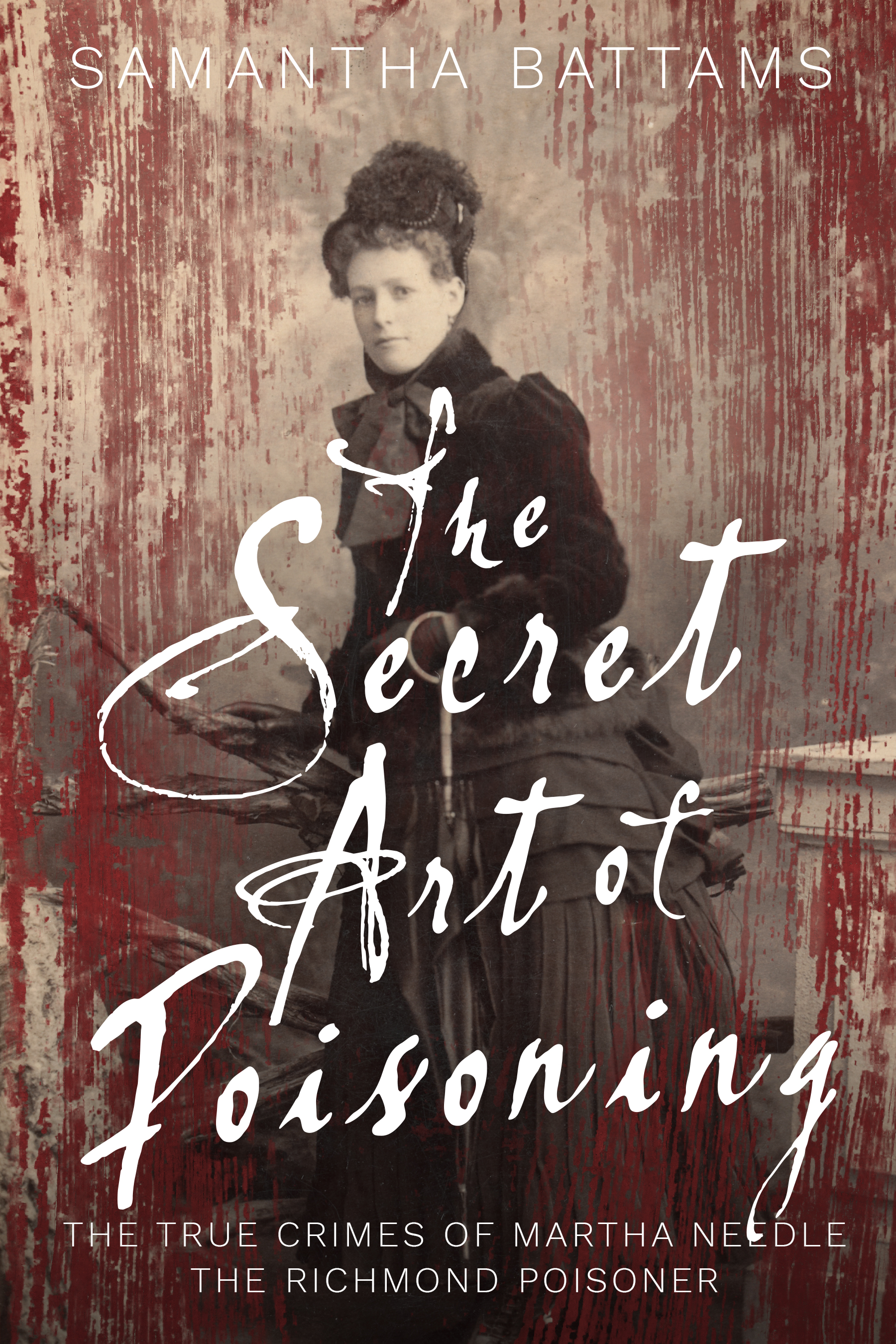Author: Samantha Battams
Publisher: Self-published/2019
Reviewer: Narrelle Harris
When I first moved to Melbourne in the late 1990s, I lived in Richmond. At some point during my five years there, before I moved to the city, I learned about Martha Needle, the woman who lived on Bridge Road in the 1890s and poisoned her husband, three children and the brother of her fiancé.
That’s as much as I knew, but that little conjured an image of a sly, vicious woman, disposing of unwanted encumbrances to get her own way and maybe a spot of insurance money.
As with all true stories, however, a lot more complexity is unravelled when you start to explore the details. Martha Needle’s guilt, on the face of it, is undoubted, and she was hanged for her crimes – but author Samantha Battams does an excellent job of uncovering the details of Martha’s tragic history and the circumstances of her crimes.
Battam goes into Martha Needle’s life in detail, beginning with the life of her mother, Mary Newland, who arrived in Adelaide in 1852, one of many women who came to be brides for the male-dominated colonial outpost.
The Secret Art of Poisoning: The True Crimes of Martha Needle, The Richmond Poisoner is a very thorough account of Martha’s harsh and difficult life, her precarious mental health and the deeds she committed and for which she was punished. Biased news coverage, many personal letters, the court proceedings (including the judge’s summing up) and other primary documents are quoted at length, and the final chapter brings together Battams’ observations on the social and historical influences that are so deeply embedded in the fate of Martha Needle and her victims.
On the technical side, a more stringent proofread before publication would have caught some of the more obvious typos and inconsistencies in punctuation which caught my eye and interrupted the reading flow, especially in the early chapters, but it’s a minor niggle in the presentation.
It’s a solid account, but if there’s a disappointment, it’s in an early promise not fulfilled. Battams reveals in the introduction how she stumbled across Martha Needle’s story by first encountering the story of how one Alexander Lee poisoned his wife and children in the 1920s. Lee was Martha Needle’s nephew.
The early suggestion of looking at how these two relatives and their fates were connected is only lightly touched on. I’d have enjoyed a bit more analysis, involving a more explicit look at their parallels, especially since the introduction specifically notes “I was also curious to know, did Alexander Lee know his Auntie Martha and grow up with stories of her infamous deeds?’ while the back blurb reads “What strange quirk of fate led these two relatives… to commit virtually the same crime?” Any answer is inferred rather than fully examined.
Although my curiosity is left largely unsatisfied, The Secret Art of Poisoning: The True Crimes of Martha Needle, The Richmond Poisoner is a thorough examination of a horrible crime, trial by media, the treatment of poverty, trauma and mental health by the 19th century justice system, and how the truth is always so much more complex than a sobriquet like “The Richmond Poisoner” can ever hope to show.
